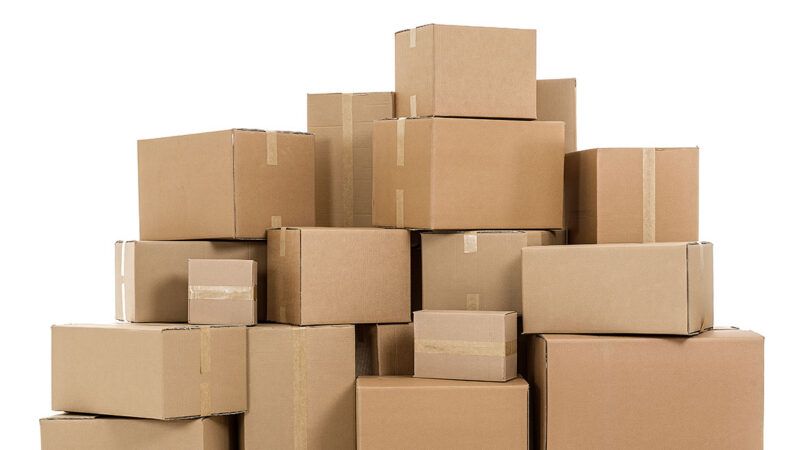Control Your Cardboard, Control Your Life
Cardboard is vital to modern life. But what happens when it piles up?

Since Albert Jones filed his U.S. patent for corrugated paper packing material in 1871, cardboard products have played the cart to globalization's horse. Cheaper and lighter than a crate and more protective than paper or straw, cardboard has made myriad goods affordable and deliverable to just about anywhere. From carrying glass vials of medicine at the turn of the 20th century to entire couches at the beginning of the 21st, cardboard is a linchpin of modern life.
So why do so many of us hate it so much? A few months back, I found myself losing sleep over the cardboard pile in our garage. It began with the disposable cocoons for a couch, bed frame, and mattress. As time schlepped on, the pile grew. Boxes for a dehumidifier (summer) and then a humidifier (winter) followed, along with various brown containers from Amazon and Walmart. I'd planned, as one does, to break them down as they arrived and put them in the recycling bin. But this only works if you do it, and I didn't.
When my wife and I realized getting rid of the pile would take months of filling the recycling bin with nothing but cardboard, we devised a new plan: drive the pile to a nearby county drop-off. Then the pile outgrew our cars.
Man plans; cardboard laughs. Man gives up.
How did we lose control? For one thing, household recycling bins have been no match for the massive amount of cardboard that accompanied the COVID-19 consumer spending binge. Sure, you can pile folded boxes on the curb and hope for the best, but drenched cardboard is less recyclable, and some jurisdictions charge penalties for material outside a bin—if they take it at all.
The one-size-fits-all approach to curbside recycling is a shame, as most recycled cardboard actually gets turned into other useful things, unlike a large portion of nominally recyclable plastics, which are sent to landfills or shipped overseas and burned. For me, the answer was not a bigger government bin or more government trucks but expanding my concept of cardboard's potential second life.
The first revelation was that it makes a fantastic soil supplement. Do you have a yard? A garden, perhaps? Buy a paper shredder that can handle 24 sheets and shred your cardboard. You can use those fragments as mulch in a vegetable or flower bed, or as the carbon element in a compost system. Large, heavy sheets of cardboard too tough to tear down or shred can be used as a weed mat and be covered in dirt or mulch (or shredded cardboard). Just make sure to peel the tape off before you return it to the earth.
City dwellers, you can also shred your cardboard and then put it in a recyclable bag (or right in the trash, if you care so little about the planet). No room for a shredder? Buy scissors made for cutting carpets; they cost roughly $20 on Amazon and make quick work of even the thickest cardboard. The goal is simply to reduce the cubic volume.
"Ah, but time is money," you say, and rightly so. Busy parents or moguls should direct their precious attention to a local freecycle group on Facebook or Nextdoor, where there is someone who will take anything provided it's free. Dead houseplants? This person wants them. A Ziploc bag full of mismatched screws from old Ikea furniture? Ditto. This person will also (probably) want your cardboard. Maybe he's moving, or maybe he's hoarding; it doesn't matter as long as he takes the pile.
You can also pay someone to take your overwhelming quantity of cardboard. Post a pic of your pile on Craigslist, offer $50 for pickup, and eager beavers will inundate your phone within the hour. Or try a service like TaskRabbit. The labor market may be hot, but it will never be too hot for odd-jobbers. (Just make sure to take your address off the boxes in case they end up illegally dumped in an alley or side street.) If you care deeply about cardboard recycling, a licensed junk hauler or moving company will take your pile to the right place for a thicker fee than the Craigslist merc.
Find a creative way to reuse or recycle your cardboard, and you can resume appreciating it. The alternative is to buy less, and where's the fun in that?

Show Comments (63)